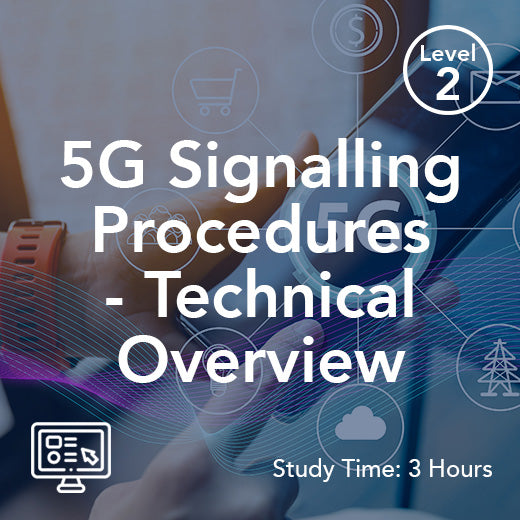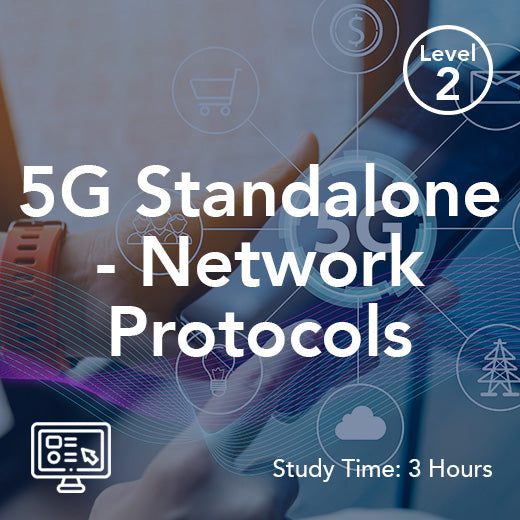Understanding APN: Your Guide to Mobile Connectivity
- , by Paul Waite
- 15 min reading time
In today's digital age, understanding the mechanics of mobile connectivity is essential for anyone who uses a smartphone or tablet. At the heart of this connectivity lies the Access Point Name, commonly known as APN. The APN serves as a gateway between the mobile network and the wider internet, ensuring that your device can send and receive data, access web pages, and utilise apps seamlessly. Whether you're trying to set up your new phone or troubleshoot a connectivity issue, gaining a clear understanding of how APNs work can make a significant difference in your mobile experience. In this guide, we will delve into the world of APNs, breaking down their importance and functionality in simple terms.
Introduction to APN
What is an APN?
An Access Point Name (APN) is a crucial element in the mobile connectivity framework. It functions as a configuration setting on mobile devices, allowing them to connect to the internet via the mobile network. Essentially, the APN acts as a bridge between your mobile service provider’s network and the internet. When you attempt to access online services, your mobile device uses the APN settings to establish a connection. This includes sending and receiving emails, browsing web pages, and using apps that require internet connectivity. The APN contains important details such as network identifiers and security settings that ensure data is routed correctly. The APN identifies the packet data network (PDN) your device connects to, specifying the type of service or network available. Identifying the correct packet data network is essential for proper data routing and access to the intended services. By understanding what an APN is, users can troubleshoot connectivity issues or modify settings to improve performance, thus enhancing their overall mobile experience. Ultimately, an APN is a vital component that ensures seamless and efficient mobile internet access.
Importance of APN in Connectivity
The Access Point Name (APN) is integral to mobile connectivity, serving as the gateway that connects devices to the internet. Without a correctly configured APN, a mobile device would struggle to access online services, rendering internet-dependent apps and functionalities ineffective. The APN settings inform your device how to connect to your carrier’s data network, detailing the necessary parameters for a stable and secure link. The carrier uses the APN information to determine the appropriate network connection, assign IP addresses, and configure security protocols for your device. This includes the network type, authentication types, and IP addresses needed for connectivity. A correctly set APN ensures that data is transmitted efficiently, reducing the risk of connectivity drops or slow internet speeds. For individuals frequently travelling or switching between network providers, understanding APN settings can be crucial, as incorrect configurations may prevent access to the internet. Consequently, the APN is pivotal in maintaining a smooth and uninterrupted mobile internet experience, highlighting its importance in the digital age.
Components and Types of APN
Key Components of an APN
An Access Point Name (APN) is made up of several essential components that work together to enable your device to connect to the internet or other computer networks through your mobile network. At the core of every APN are two main elements: the Network Identifier and the Operator Identifier. The Network Identifier determines which external network—such as the public internet or a private network—your device will access. This is crucial for directing your data to the right destination, whether you’re browsing the web or connecting to a secure business network.
The Operator Identifier, meanwhile, is what links your APN to your specific Mobile Network Operator (MNO). It consists of a Mobile Country Code (MCC) and a Mobile Network Code (MNC), which together uniquely identify the carrier providing your mobile service. These codes ensure that your device connects to the correct mobile network, especially when roaming or using IoT devices that need to access specific networks. By understanding these key components, users and businesses can configure APN settings more effectively, ensuring reliable data connections and seamless access to the internet or private networks across a wide range of devices.
Different Types of APN
APNs come in several types, each designed to meet different connectivity and security needs. The most common is the Public APN, which connects your device directly to the public internet. This type of access point is typically used for everyday mobile data activities like web browsing, social media, and streaming, making it suitable for most consumer devices. However, because Public APNs route traffic over the public internet, they may not provide the level of security required for sensitive business applications or IoT deployments.
For organizations and businesses that need enhanced security and control, Private APNs offer a dedicated connection to a private network. With a Private APN, data bypasses the public internet and travels directly between the device and the company’s internal network, reducing exposure to external threats. This is especially valuable for businesses managing sensitive data or deploying IoT devices that require secure, reliable connections.
Another variation is the Public APN with a static IP address. In this setup, each device is assigned a fixed IP address, which can be essential for applications that need to maintain a consistent network presence, such as remote monitoring or secure access to company resources. By choosing the right type of APN—whether public, private, or with a static IP—users and businesses can tailor their mobile connectivity to match their specific security, performance, and operational requirements.
How APNs Work
Behind the Scenes of APN
The Access Point Name (APN) operates behind the scenes to ensure seamless connectivity between your mobile device and the internet. When a device attempts to establish a network connection, it sends a request through the mobile network using the APN settings. These settings are typically configured automatically when a SIM card is inserted or an eSIM is activated, so users usually do not need to set them up manually. These settings contain critical information such as the network identifier, gateway address, and security measures, which guide the device in connecting to the internet correctly. The mobile network then uses this information to authenticate the device and route data appropriately. During this process, the APN helps maintain a secure connection by managing IP addresses and handling data traffic efficiently. It also determines the type of data connection, whether it’s 3G, 4G, or the newer 5G networks. Understanding the intricacies of how APNs function can empower users to manage their mobile connectivity better, providing insights into troubleshooting and optimising their internet usage effectively.
APN Settings Explained
APN settings are a set of configuration details that allow your mobile device to connect to your service provider’s data network. These settings typically include several components: the APN name, MMSC (Multimedia Messaging Service Centre), and authentication type, among others. The APN name is a unique identifier assigned by your carrier to enable internet access. MMSC settings are crucial for sending and receiving multimedia messages. The authentication type ensures secure access, typically requiring a username and password, although some networks may not need these credentials. Furthermore, the settings might include proxy information, which helps in routing data through specific servers for additional security or performance improvements. These configurations are generally pre-set by your network provider, but users might need to adjust them manually when changing SIM cards or travelling abroad. This often involves entering or updating the APN field with the correct information provided by the carrier. Understanding and correctly configuring APN settings is key to maintaining robust and reliable mobile internet connectivity, ensuring your device operates smoothly.
Configuring Your APN
Step-by-Step APN Setup
Setting up an APN on your mobile device is a straightforward process that can significantly enhance your connectivity experience. To begin, navigate to the settings menu on your smartphone. From there, find the ‘Mobile Networks’ or ‘Connections’ option, which will lead you to ‘Access Point Names’. Once there, you can either edit an existing APN or create a new one by tapping on the ‘Add’ button. When configuring an APN, ensure you have the correct details from your network provider, including the APN name, MMSC, and any necessary authentication credentials. Input these details carefully to avoid errors. It is important to enter all the information provided by your carrier to ensure proper configuration. In some cases, the APN field can be left blank, allowing the device to automatically populate the access point name using carrier settings. Double-checking the values you enter during setup can help prevent connectivity issues. After entering the required information, save the settings and select the newly configured APN as your active connection. Restart your device to ensure the changes take effect. This simple setup can resolve connectivity issues and optimise your device’s internet performance, providing a seamless online experience.
Troubleshooting Common APN Issues
Despite being a straightforward process, APN setup can sometimes lead to issues that disrupt connectivity. One common problem is entering a wrong APN, which can prevent your device from accessing the internet. For example, if you accidentally input an incorrect APN value, you may lose connectivity until the correct information is restored. Double-checking the details provided by your network provider can often resolve this issue. Another frequent issue is the absence of an APN, which can occur if settings are accidentally deleted or not pre-configured on a new SIM card. Adding the APN manually usually solves this.
Additionally, network-related issues, such as poor signal strength, can affect connectivity. Ensuring you are in an area with good coverage can help mitigate this. Restarting your device can also resolve minor glitches. Performing a reset of APN settings to default can often resolve issues caused by a wrong APN.
Note: Before making changes or performing a reset, be sure to record your current APN settings so you can restore them if needed.
Finally, if issues persist, resetting the APN settings to default or contacting your carrier for support may be necessary. By addressing these common problems, you can maintain smooth and efficient mobile internet connectivity.
Advanced APN Concepts
Private Access Points: What They Are and When to Use Them
Private Access Points, often referred to as Private APNs, are specialized gateways that provide secure, direct connections between devices and a private network, rather than routing data through the public internet. This approach is particularly valuable for businesses and organizations that handle sensitive data or require strict control over their network traffic. By using a Private APN, companies can ensure that their data remains within a secure environment, reducing the risk of unauthorized access or data breaches.
Private APNs are especially beneficial for IoT devices, which often transmit critical or sensitive information and need reliable, low-latency connections. These private access points can be configured to assign static IP addresses to devices, making it easier to manage and monitor network activity while enhancing security. Industries such as healthcare, finance, and government frequently rely on Private APNs to comply with regulatory requirements and protect confidential information.
For businesses looking to safeguard their data, maintain compliance, and ensure uninterrupted connectivity, implementing a Private APN is a strategic choice. By understanding when to use a Private APN—such as for secure remote access, sensitive data transfer, or large-scale IoT deployments—organizations can optimize their network security and performance, keeping their operations running smoothly and securely.
APN and Mobile Networks
Role of APN in Data Usage
The Access Point Name (APN) plays a significant role in managing data usage on mobile networks. By directing how your device connects to the internet, the APN influences the flow and amount of data transferred between your device and the network. It ensures that data packets are routed efficiently, which can impact how data is consumed. Some APN settings can prioritise certain types of data usage, such as streaming or browsing, which can affect overall data consumption. Additionally, specific APN configurations may offer features like data compression or optimisation, helping to reduce data usage. In some cases, APN configurations may enforce usage policies to help manage and control data consumption. Understanding your APN settings can also assist in monitoring and controlling data usage, especially if you have a limited data plan. By configuring the APN appropriately, you can balance performance with data consumption, ensuring that your browsing, streaming, and app usage remain within your data allowance while maintaining a smooth internet experience.
APN Impact on Network Speed
The Access Point Name (APN) can significantly influence the speed of your mobile network connection. By determining how your device accesses the internet, the APN settings can affect data transmission rates. Properly configured APNs ensure that your device connects to the fastest available network, such as 4G or 5G, thereby maximising speed and performance. Most devices use default APN settings to achieve optimal network speed, but advanced users may benefit from custom configurations for specific needs. Conversely, incorrect or outdated APN settings can result in slower connections, as the device may default to older network technologies or inefficient routes. Additionally, some carriers provide multiple APNs that cater to different data services, such as general internet use versus high-speed data for streaming. Selecting the most suitable APN can thus enhance your network speed. Furthermore, APN settings may include features like data compression, which can improve loading times for web pages and apps. Understanding and optimising APN settings can help users achieve the best possible network speeds, improving their overall mobile internet experience.
Choosing the Right APN
Custom vs Default APNs
When it comes to APNs, users often have the option to choose between custom and default settings. Default APNs are pre-configured by mobile carriers and are designed to work seamlessly for the majority of users. They provide a hassle-free setup, ensuring that devices can connect to the internet without requiring user intervention. However, default APNs may not always be optimised for specific needs or network conditions, particularly if you’re using a device from a different country or carrier. On the other hand, custom APNs allow users to tailor settings to their individual requirements, potentially improving connectivity and performance. Custom APNs are particularly valuable for customers who require tailored connectivity solutions, such as those needing reliable, secure, and managed IoT connectivity. Configuring a custom APN can be essential for ensuring reliable connectivity for an IoT device, especially when specific network requirements must be met. This can be particularly useful for advanced users who understand the technical aspects of mobile networks. By adjusting details such as proxy settings, authentication types, or choosing between private and public static IP addresses for devices that need consistent connectivity on public networks, users can fine-tune their internet experience. Nonetheless, it’s important to proceed with caution when modifying APN settings, as incorrect configurations can lead to connectivity issues.
Security Considerations for APN Setup
When setting up an APN, security should be a primary concern to safeguard your data and privacy. APN settings can sometimes expose your device to vulnerabilities, especially if misconfigured. Ensuring that your APN uses secure authentication methods is crucial; this typically involves setting a username and password to prevent unauthorized access. Some networks may also offer encryption options to enhance security further. Businesses can implement their preferred security policies when configuring private APNs, allowing for tailored protection of sensitive data. Various security methods, such as encryption and access controls, are available to enhance APN security. Using a VPN or multiple VPNs can provide an additional layer of security for data transmitted over mobile networks.
It’s advisable to use the default APN settings provided by your carrier, as they are usually optimised for security and performance. However, if you opt for a custom APN, you have the option of setting up a private access point or private access point name for secure, internal connectivity. Assigning a private static IP or private static IP address to devices ensures consistent and secure network access, which is especially important for IoT deployments. IP addressing is a key consideration in private APN configurations, as it impacts device management and network security. Legacy network types, such as GPRS, may require specific APN settings to ensure secure and reliable connectivity. Verify the source of your configuration details to avoid fraudulent setups. Regularly updating your device’s software and APN settings can also protect against potential security threats. Finally, be cautious when connecting to public Wi-Fi networks, as they can increase the risk of exposure. By prioritising security during APN setup, you can ensure a safe and reliable mobile internet experience.

































